;@7D2EFDG4FGD6 7G@5
<X^ZdZ^X ç cecdçZ^çTæW
åedebW dYçd cdZ]eæçdWc
Xb_gdY"

a© ,Å£Ù ÝäÙé äéÙ #éÅ ¬Ý ä ¾ûÝä £ËÙ ÝË ¬Ë ËÅËĬ ¤ÙËõä© Å ô ¾ËÖÄ Åä ¬Å ZËéä© £Ù¬ Ä Å ä äË äÙ ÅÝ£ËÙÄ ä© ¤Ëô ÙÅÄ Åä Ý ÖÖÙË © äË £¬Å Å ¬Å¤ ¬Å£Ù ÝäÙé äéÙ ÖÙ˸ äÝ Ù é ¬Å¤ £Ù ¤Ä Åä ä¬ËÅ ¬Å ¬Å£Ù ÝäÙé äéÙ ÝÖ Å ¬Å¤ Å ÅÝé٬Ť ä© ££¬ ¬ Åä Å ££ ä¬ô éÝ Ë£
¤Ëô ÙÅÄ Åä Ù ÝËéÙ Ý ,ä ¬Ý ÝäÙ ä ¤¬ ¾¾û ÖËݬä¬ËÅ äË Ö¾ û Ö¬ôËä ¾ Ù˾ ¬Å ä© ËÅËÄû û ¾ Ù ä¬Å¤ ÝË ¬Ë ËÅËĬ ô ¾ËÖÄ Åä û Å ¾¬Å¤ ä© £¬Å Å ¬ ¾ ÝäÙé äé٬Ť ÙËõ ¬Å¤ ¬Å Ë£ £¬Å Å ¬ ÙÝ Å ¬ÄÖ¾ Ä Åä¬Å¤ ÖÙ¬ËÙ¬äû ¬Å£Ù ÝäÙé äéÙ ÖÙˤ٠ÄÄ Ý Å ÖÙ˸ äÝ ¬Å Ö ÙäÅ ÙÝ©¬Ö õ¬ä© ÝÖËÅÝËÙÝ
aˤ ä© Ù õ¬ä© ¬äÝ Ö ÙäÅ ÙÝ ä© ,Å£Ù ÝäÙé äéÙ £éÅ ËÅ é äÝ ÖÙˤ٠ÄÄ ÝÝéÙ Å ä¬ô¬ä¬ Ý £ÙËÄ Ö¾ ÅŬŤ äË ¾ ú¬ä ¬¤Å¬ä¬Å¤ ä© Ù ä¬ËŠˣ Å õ ÝÝ äÝ ä© ä Å £¬ä ä© ËéÅäÙû a©ÙË餩 ä©¬Ý õËÙ» ä© ,Å£Ù ÝäÙé äéÙ #éÅ ¬ÄÝ äË ¬ÄÖÙËô ä© Øé ¾¬äû Å Ù ä Ë£ ¬Å£Ù ÝäÙé äéÙ ¬Åô ÝäÄ Åä ¬Å
ZËéä© £Ù¬ ÝéÖÖËÙä¬Å¤ ä© ¤ÙËõä© Ë£ éݬŠÝÝ Ý Å ËÄÄéÅ¬ä¬ Ý




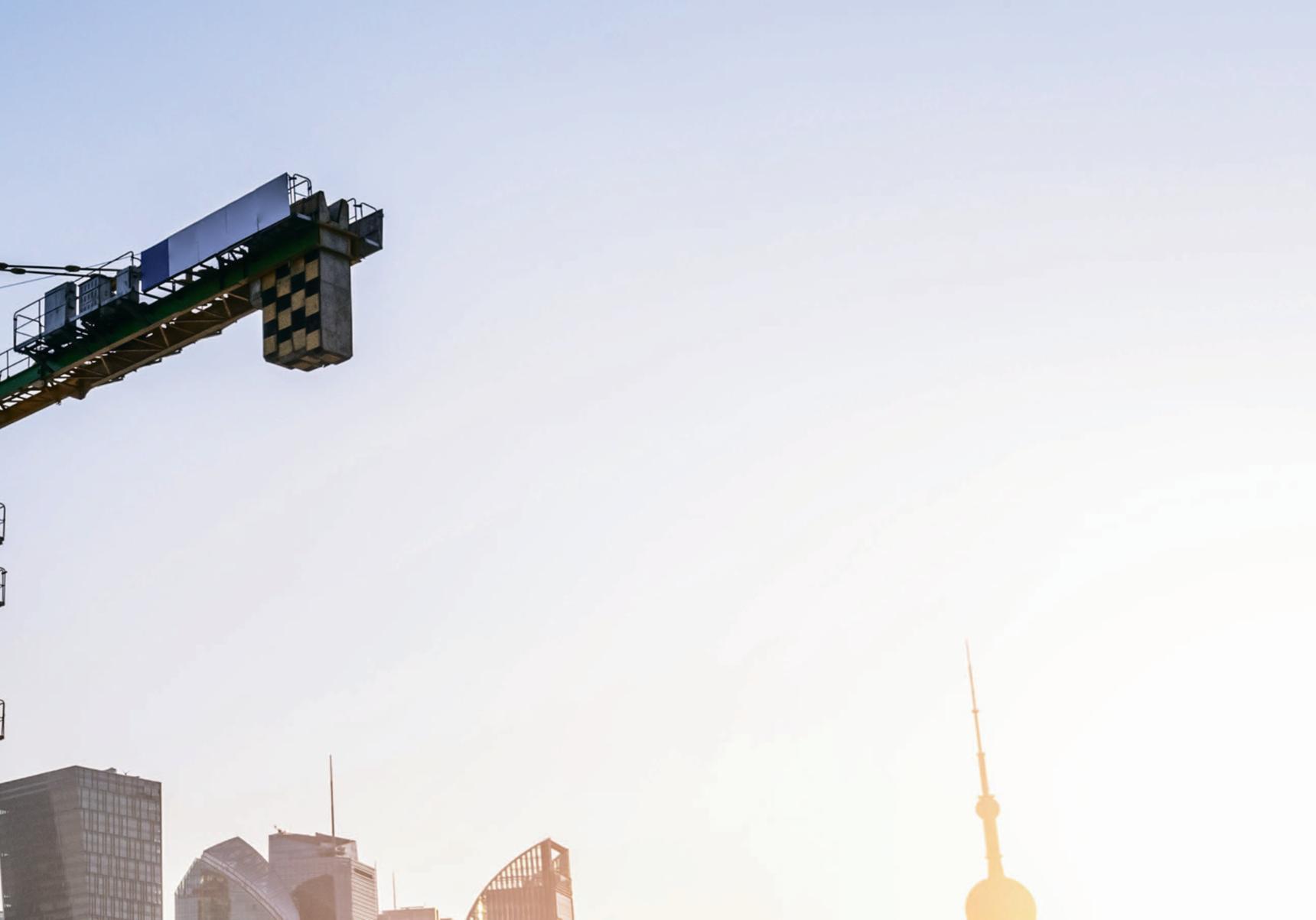


Special report
Who is the survey about?
Mind the infrastructure gap
Getting the public and private sectors to work together is critical to SA’s economy
● South Africa continues to underspend on infrastructure despite setting itself a target of at least 30% of GDP by 2030, resulting in the country lagging other faster-growing economies when it comes to infrastructure spend.
The consequence of this underspend is being felt in the economy with inadequate investment in critical infrastructure such as energy, rail, road and ports.
This is a significant contributing factor in South Africa’ s poor economic performance, says Sinenhlanhla Zulu, an investment specialist at Ninety One.
“Better infrastructure brings with it more inclusive growth and prosperity as well as global competitiveness, all of which South Africa sorely needs.
”
South Africa is in the bottom quartile of gross fixed capital formation as a percentage of GDP, with the World Bank estimating it at 14% in 2020. This is just over half the world aver-

age at 26%.
“Given that the South African Institution of Civil Engineering rated 17 out of 32 different infrastructure segments as being ‘at risk of failing’ or ‘unfit for purpose ’, the situation clearly needs urgent and sustained attention, both as a primary boost to activity and as a facilitator of growth for the wider economy, ” says Zulu.
The need for funding, considering the state’s constrained finances, will require the involvement of both commercial and developmental lenders, she says.
“On the commercial side, banks alone will not be able to provide enough support and are looking for partners through asset owners and fund managers.”
Infrastructure SA which was established as a single point of entry for infrastructure planning, management and delivery and to close the infrastructure investment gap announced 153 projects that government and state-owned enterprises will procure in the current financial year at the Sustainable Infrastructure Development Symposium in Cape

Town.
Of the projects, 11 are expected to reach financial close this year. They include projects in transport, electricity, water and port logistics and are worth a combined R45bn.
The lethargic activity in the infrastructure sector is reflected in the Afrimat Construction Index, an indicator of the level of activity in the building and construction sectors, which recorded quarter-on-quarter negative real growth rates in five of its 10 indicators in the fourth quarter of 2023.
Chris Campbell, CEO of

Consulting Engineers South Africa (Cesa), says the publication of Infrastructure SA’s book of projects is an encouraging sign that government plans to ramp up infrastructure delivery.
What the publication of the Construction Book has done, is restorea degree of confidence, particularly among larger companies. “A recent survey among our member base revealed positive sentiment among larger companies, though there was less confidence among medium and smaller companies,” he says. Infrastructure projects in the pipeline for the next two years include three water and sanitation projects with a combined value of R32bn; roads, rail, ports and airports projects valued at R90bn; and R38bn worth of projects in the energy sector. These exclude projects to repair and maintain existing infrastructure.
“If all these projects were to materialise there is certainly enough work to keep the combined engineering and construction industries in business if they were to be equitably split. In fact, it’s probably more
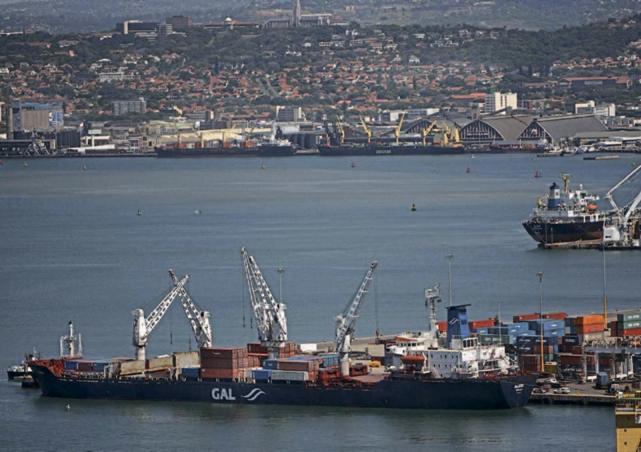
Special report
4 4 financialmail.co.za . May 23 - May 29,2024
Infrastructure
Sinenhlanhla Zulu

Our ability to identify and realise opportunities on the African continent has established our IDEAS Fund as one of the largest domestic infrastructure funds in South Africa.
(MYPJHU 0UMYHZ[Y\J[\YL 0U]LZ[TLU[ 4HUHNLYZ 7[` 3[K 9LN 5V -:7 PZ H SPJLUZLK ÄUHUJPHS ZLY]PJLZ WYV]PKLY HWWYV]LK I` [OL -PUHUJPHS :LJ[VY *VUK\J[ (\[OVYP[` (www.fsca.co.za) to provide advisory and/or intermediary services in terms of the Financial Advisory and Intermediary Services Act 37 of 2002. African Infrastructure Investment Managers (Pty) Ltd is a wholly owned subsidiary within Old Mutual Investments (Pty) Ltd and is ultimately owned by Old Mutual Limited. For more information, please visit www.aiimafrica.com.
Who is the survey about?
Special Report Infrastructure
work than the private sector can cope with,” says Campbell.
The problem, he says, is that though many of the projects included in Infrastructure SA’ s Construction Book look encouraging, if history is any indication, very few of them will materialise. “More than a decade ago, a similar project pipeline, known then as Strategic Infrastructure Projects, was published but only a few of those projects ever materialised. This looks very much like history repeating itself. Our infrastructure spend has been declining for some years now. We seem to be very good at moving the goalposts, or as the National Infrastructure Plan (NIP) 2050 document frames it, making a, ‘course correction’ with the 30% target now shifted from NIP 2030 to NIP 2050.”
The upcoming national elections, he says, puts a further question mark over whether any of these intentions will actually materialise.
Worsening the situation is confusion around how to implement preferential procurement. Campbell says public entities all adhere to their own set of standards and evaluation criteria, making it almost impossible for the private sector to respond to the variations in such selection criteria across
all spheres of government including SOEs.
“This shouldn’ t be the case and public procurement rules should be standardised through a framework as prescribed in national legislation according to sections 217 (1), (2) and (3) of our constitution, which is currently not the case, ” he says, adding that South Africa also needs to be more deliberate in enabling partnerships between the public and private sectors.
Cesa, a voluntary association of consulting engineering firms with a member base of more than 560 companies, employing about 19,000 people, is among the private sector players which have offered to help capacitate the state with critical skills.
Campbell says the engineering sector has no intention of assuming responsibility for public infrastructure and fully supports a competent technical state to play this role.
“The reality, however, is that government, for various historical, political and economic reasonshas not been able to build a capable state and does not have sufficient internal capacity to manage all of the infrastructure assets which it owns. But despite its shortcomings, government remains wary of the private sector, where the requisite capacity and competenceis available and, on the contrary, seeks to insource professional services, at a time when globally engineers are in short supply, risking a further drain of our local engineering expertise.
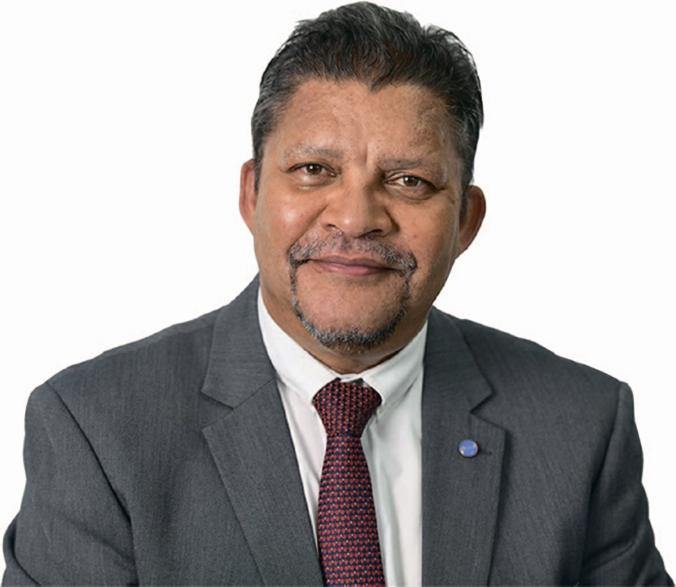
“Water is also a crisis which we urgently need to address and stop kicking the can down the road, as was the case when we first started experien-
Chris Campbell
cing long and frequent power outages. The water crisis adds to a number of existing problems in the logistics and energy sectors, among others.”
Addressing these issues requires building the necessary skills in each sector.
“Around the world, most countries have been focusing on updating and rebuilding aged infrastructure to help build their economies. South Africa’s locally-grown engineering skills are highly sought after and, given the glacial pace of our infrastructure development, many of these skills are leaving the country to fulfil the need for secure employment and to fulfil other quality of life aspirations they may have for themselves and their children. These are skills we may struggle to get back.”
South Africa needs to find a more efficient and effective way of delivering large-scale infrastructure as opposed to the current open tender system, he says.
Earlier this year the National Treasury announced reforms to infrastructure financing and delivery aimed at optimising the infrastructure value chain to be more effective and efficient, strengthen public investment management and to attract the private sector.
Finance minister Enoch Godongwana says efforts are being made to reduce the complexity around public-private partnerships, create capacity to support these partnerships and strengthen governance around fiscal risk.
The question is whether these reforms are sufficient to turn the tide? The elephant in the room, however, remains the state’s limited internal technical capacity to be able to do this on its own, says Campbell.
“One of the biggest challenges in the public sector is that people without the requisite technical expertise and competence have been employed in senior technical
management positions,” says Campbell.
“They don’t have the experience to provide any degree of valuable technical mentoring to young graduates who may be recruited into the public sector, with the result that many of these individuals end up leaving the public sector.”
At a local government level, the skills challenge has been worsened by a coalition government jockeying for positions of power rather than service delivery, he says.
“Municipalities need to start being run like businesses and take responsibility for service delivery to the citizens, who are in fact their clients.”
While government tends to falter when it comes to implementation, that’s where the private sector excels, says Campbell, which is why public-private partnerships need to be facilitated.
“There are many well-intentioned people working in the public sector. However, the reality is that there are limits to how much these capacity constrained entities may be able to achieve considering the resources they have available. Unfortunately, there is often a mismatch between the expectations set for these public entities and the factors that are beyond their control, which leads to underspending and funds being returned to National Treasury.”
It’s time, says Campbell, for the public and private sectors to work together to address South Africa’s infrastructure crises and to put the necessary policies and procedures in place to attract infrastructure investment.
Engineers with the technical infrastructure development and delivery experience, combined with the political, economic and social savvy are waiting for that seat at the table.
The fate of our ailing economy relies on getting this right. x
Special report
6 6 financialmail.co.za . May 23 - May 29,2024
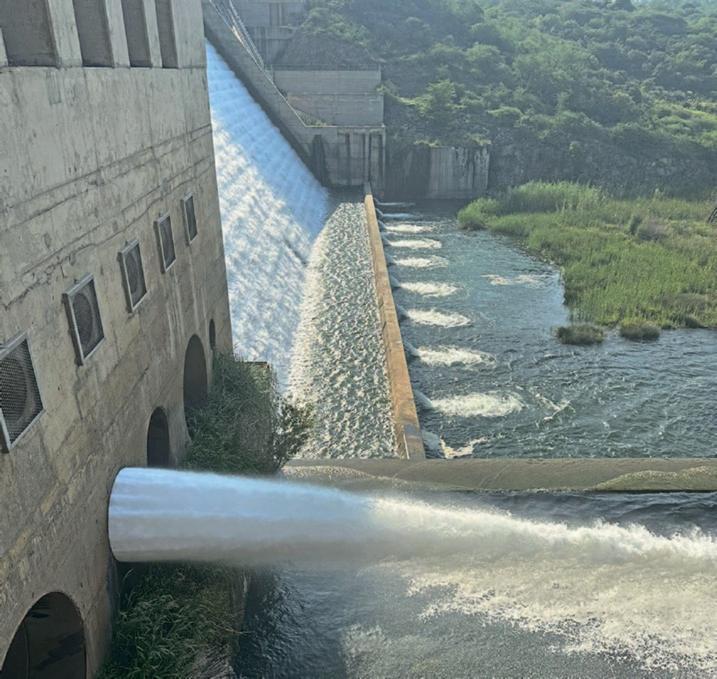
Fund targets
Notable success achieved in the past financial year
● The Infrastructure Fund overachieved on a number of operational targets in the past financial year.
A total of six projects and programmes were approved against an annual target of four, with a value of R44bn.
Apartnership between the department of public works & infrastructure, Infrastructure South Africa, the National Treasury and the Development Bank of Southern Africa led to the Infrastructure Fund that was established in 2020 as a dedicated unit to identify and develop innovative and appropriate funding structures.
Chief investment officer
Mohale Rakgate says the fund is strategically positioned to play a pivotal role in the economy. This is done by accelerating socioeconomic development by enabling the financial structuring, crowding-in of financiers and implementing priority infrastructure programmes and projects in partnership with sponsors.
“Given a severely constrained sovereign budget and declining gross fixed capital formation, the fund plays an important role in combining government funding and ancillary support for blended finance to enable programmes and projects with a significant
economic, social and developmental impact,” he says.
“Since its establishment, the core focus of the fund has been to create a credible pipeline of blended finance programmes in priority sectors and transitioning this pipeline to financial close.”
Earlier this year, Treasury announced the establishment of the Infrastructure Finance & Implementation Support Agency, which combines the Infrastructure Fund and the public-private partnerships unit in a stand-alone entity.
Rakgate says this agency will initiate the process of institutionalising the Infrastructure Fund and give effect to the public-private partnership framework review recommendation to establish a centre of excellence.
The value of infrastructure submissions to the Treasury for funding consideration amounted to R51.1bn.
There were five blended finance programmes and projects, and external finance crowded-in is projected to amount to R3.6bn.
Rakgate says the fund is assisting the Treasury to identify solutions to systematically crowd-in private sector finance and expertise into public infrastructure programmes.
The fund also helps the Treasury implement financing delivery mechanisms and in-
struments to crowd-in concessional funding that can be earmarked for infrastructure projects and to find ways to match financiers to infrastructure projects.
“The Infrastructure Fund is working with project sponsors across 14 projects for which we anticipate attracting private financing from the market, most of which is earmarked for the 2024/2025 financial year.
“The majority of our pipeline of projects are expected to reach financial close in 2024/2025, with the balance reaching financial close in
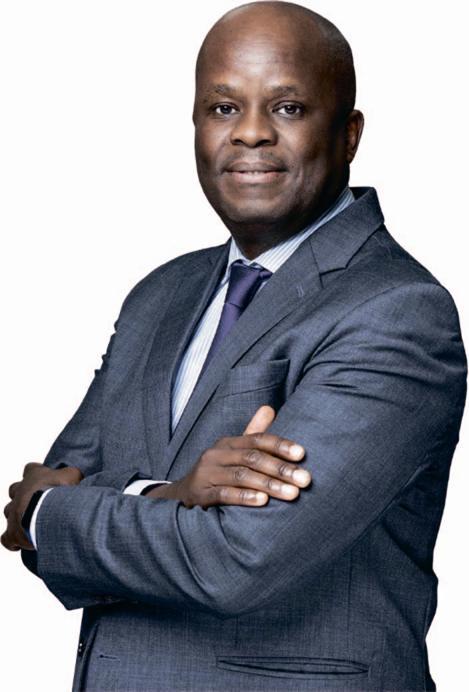
Continued on: page 10
Your Partner in Enabling Consulting Engineering Excellence



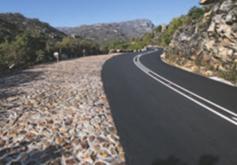





May 23 - May 29,2024 . financialmail.co.za 7 Roads Bridges Buildings Consulting Engineers South Africa @consultingengineers_sa @the_cesa CESA - Consulting Engineers South Africa Consulting Engineers South Africa
e
xceeded
Mohale Rakgate
One of DBSA’s projects

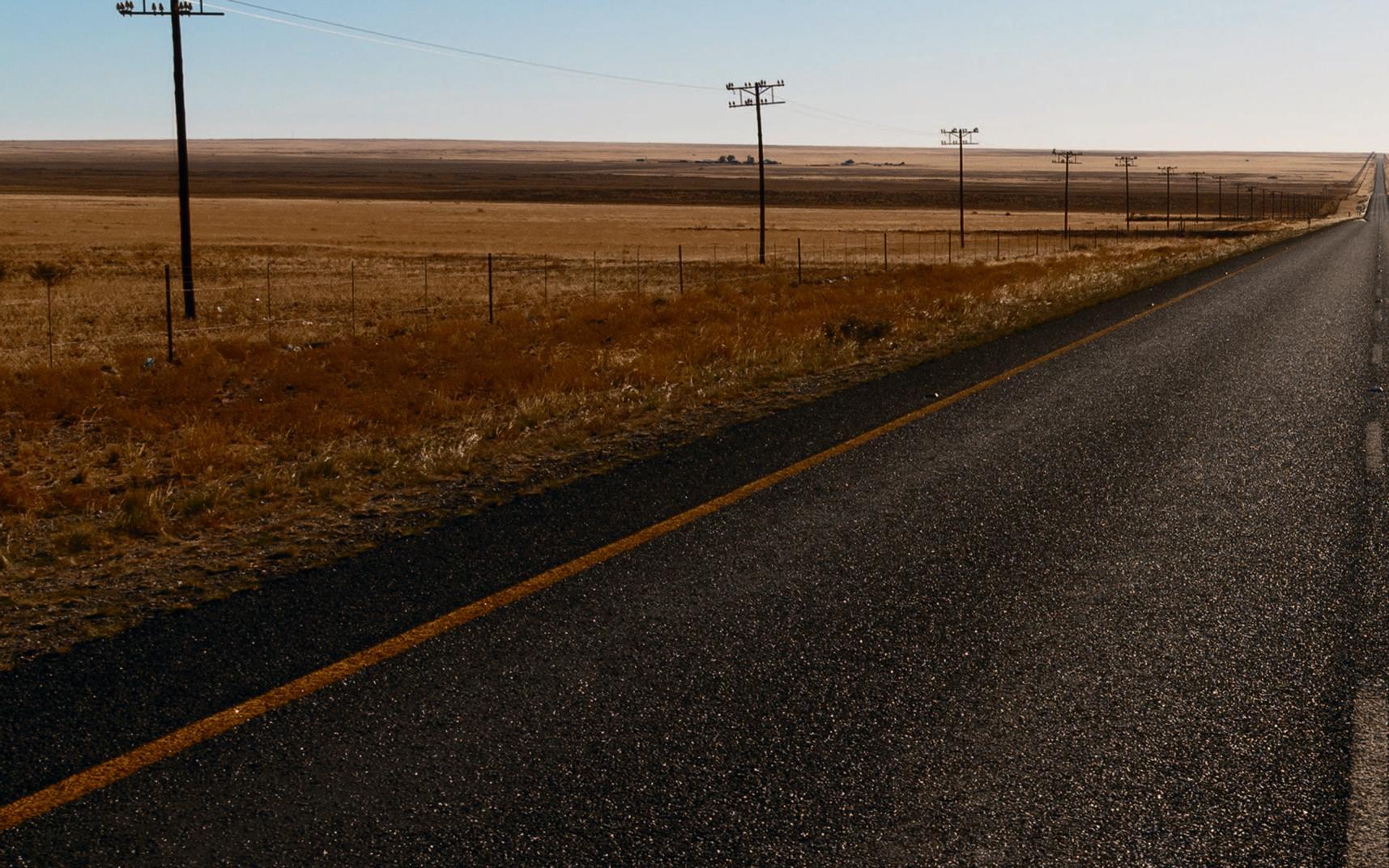


ÖÖ¾¬ ä¬ËÅ a©Ù ݩ˾





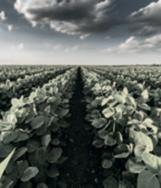


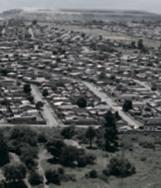
)FBMUI &OFSHZ 5FMF DPNNVOJDB UJPOT 8BUFS 4BOJUBUJPO "HSJDVMUVSF 5SBOTQPSU &EVDBUJPO .VOJDJQBM *OGSBTUSVDUVSF )VNBO 4FUUMFNFOUT
;@7D2EFDG4FGD6 7G@5




©¬ £ ,Åô ÝäÄ Åä H££¬ Ù AË© ¾ V »¤ ä

)
SÙˤ٠ÄÄ A Å ¤ Ä Åä fŬä
¾ Å V¬ ¤ Ù

)
,Å£Ù ÝäÙé äéÙ #¬Å Å fŬä aÝ©¬Ö©¬Ù¬ Aé ¬


) ÝÝ ä
A Å ¤ Ä Åä aÙ ÝéÙû fÅ¬ä ©¸ ä© 7 ¬7 ¬ ) ; ¤ ¾
#¾ËÙ A Ùéä¾
Z¬Ä ¾ Å
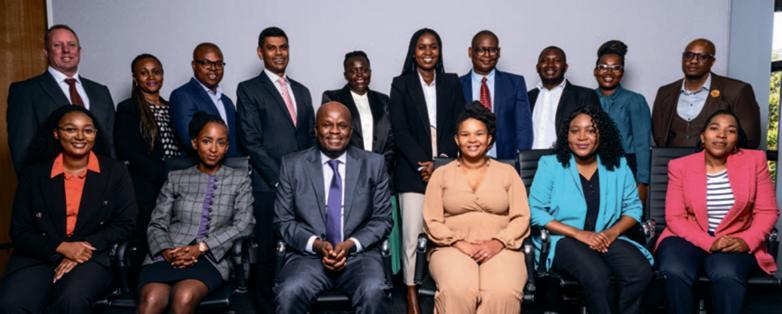
a© ,Å£Ù ÝäÙé äéÙ #éÅ
¾ ÙÝ©¬Ö Ý ¬ ä¬ËÅ Å
ô¬Ý¬ËÅ © ô ÖÙËÖ ¾¾ ä©
ËÙ¤ Å¬Ý ä¬ËÅ äË Å õ © ¬¤©äÝ
ÖËݬä¬ô ¾û ¬ÄÖ ä¬Å¤
ËÄÄéÅ¬ä¬ Ý ÙËÝÝ ä©
ËÅä¬Å Åä
Special Report ?????
Infrastructure
Continued from: page 7
2025/2026,” he says.
The projects are in human settlements, water and sanitation, transportation and student housing. They include the Hospital Street Social Housing project that is now under construction and the Goodwood Station social housing project, which is earmarked to deliver 1,055 units in two phases.
The latter project reached financial close in October and was launched in December with occupation of Phase 1 commencing.
The Infrastructure Fund is providing just over R150min debt funding support to the
project. “Without the intervention of the Infrastructure Fund, the project was not bankable,” says Rakgate.
Other projects include the Midrand Heights Social Housing Project that reached commercial close on March 28, with two facilities awarded to the project by the Infrastructure Fund, and the Lufhereng Mixed Use Development Project, which is under construction.
The fund has a number of programmes and projects in the water and sanitation sector including Phase 1 of the Olifanspoort and Ebenezer Water Supply Programme, Phase 1 of
the uMkhomazi Water Augmentation Project, the Moretele North Klipvoor Bulk Water Supply Scheme, the Pilanesberg Bulk Water Supply Scheme and the Olifants Management Model Programme.
In the student housing sector, the fund has projects at the Tshwane University of Technology, University of KwaZuluNatal, Gert Sibande TVET College and Majuba TVET College. Combined they will deliver 9,500 beds.
In the transportation sector, the fund is involved in projects at six ports of entry.
“Despite a difficult and constrained infrastructure ecosys-
Higher returns at stake
Infrastructure investments in emerging market less risky than investors believe
● While many investors have tended to avoid emerging market infrastructure investments due to the associated risks, the actual risks are not as significant as investors believe, says Martijn Proos, co-head of emerging market alternative credit at Ninety One.
Infrastructure investments offer a compelling investment opportunity, especially for institutional investors wanting a steady income stream at relatively low risk.
By their nature, infrastructure investments are structured to deliver long-term benefits, typically through publicprivate partnerships.
Currently, the majority of global infrastructure capital is allocated to developed markets, despite the fundamentals for emerging market investments being very supportive, says Proos, adding that high urbanisation rates, a growing need to transition and funding shortfalls in emerging markets
combine to make for a good investment opportunity.
The lack of interest is based primarily on the perceived risks associated with emerging markets. However, these risks are compensated for by higher returns, says Proos.
“Investors within emerging markets can expect a pickup of around 200-300 basis points over that of developed markets.
”
If the returns are attractive, why are investors not allocating a higher proportion of capital to emerging market infrastructure?
History shows that the cumulative default rates for infrastructure projects measured over 20 years are similar in both developed and emerging markets.
Proos explains that default rates are highest at the start of the term as projects enter the operational phase. They then begin to stabilise.
“In developed markets, default rates peak at around 4% and remain flat until the end of the term.
In emerging markets, default rates peak at around 6% before stabilising. Although there is a marginal increase in cumulative rates over time, these typically remain flat once projects are in their operational phase,” he says.
The counterargument to low default rates is that investors still take on more risk given that the cumulative default rates in emerging markets are marginally higher. Proos says that while this is true, the risk of permanent capital loss is largely mitigated.
“Recovery rates on infrastructure investments for both developed and emerging markets are similar at around 75%80%, which means that investors will still experience a high recovery rate, regardless of whether they invest in developed or emerging markets.”
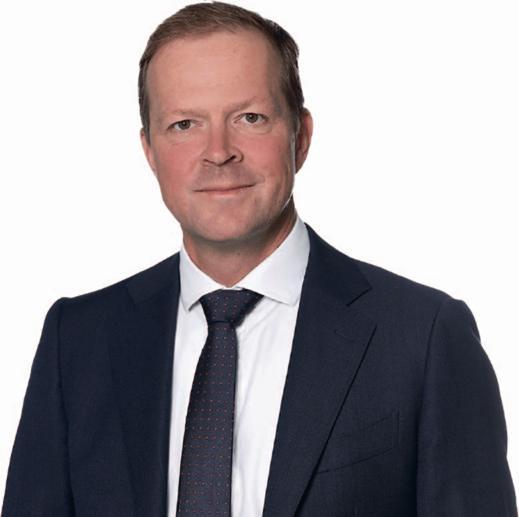
tem, the Infrastructure Fund has achieved notable success in the past financial year,” says Rakgate, adding that the two priority focus areas for the next financial year are to progress the advanced pipeline to financial close and preparing projects alongside sponsors for the special budget facility for infrastructure window.
Rakgate acknowledges that the fund faces challenges including a constrained fiscus, which is beyond its control.
He says that addressing these challenges will position the Infrastructure Fund in a pivotal role in South Africa’ s economy. x
provide an additional buffer.
“At a certain point, infrastructure assets start to display similar characteristics to that of investment-grade securities, regardless of whether the investment is in developed or emerging markets,” says Proos.
“The perceived risks associated with emerging market infrastructure investments can be mitigated and are likely to be lower than most investors expect. As investors begin to better understand the actual risks associated with these types of investments, the hope is that a greater allocation of global infrastructure capital will be directed towards emerging markets, where the need for investment is often the greatest.”
Ninety One manages the Emerging Africa Infrastructure Fund, a public-private partnership anchored by the governments of the UK, Netherlands, Sweden and Switzerland, to mobilise capital into private sector infrastructure projects across Sub-Saharan Africa.
Blended finance structures to cover first-loss positions
Martijn Proos
The Ninety One Infrastructure Credit Fund a more recent addition to its range of credit opportunities is designed to help facilitate the flow of private investments into high-quality South African infrastructure projects. x
10 10 financialmail.co.za . May 23 - May 29,2024
AI aids SA’s growing virtual power plants
Power sources can be optimised to meet fluctuating electricity needs
● Virtual Power Plants (VPPs) a network of different power sources such as wind, solar and battery energy storage systems working together are becoming prevalent in South Africa.
There are now at least five utility-scale VPPs under construction with their numbers expected to increase due to South Africa’ s need for dispatchable energy.
RMB’s head of power, infrastructure sector solutions team, Daniel Zinman, says VPPs are a boon for commercial and industrial
companies with their localised use on the rise for applications such as residential estates.
“Not only are VPPs expected to add substantial energy to the grid, but also they are making use of the wave of AI [artificial intelligence] advancements by using algorithms which can analyse data to make informed decisions on how to manage and distribute the sources of energy optimally and most economically in real-time,” he says.
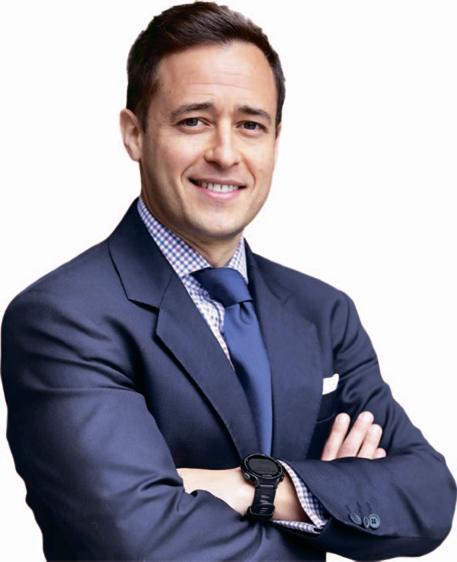
VPP operators use smart
Wind farm project for Mpumalanga
Seriti Green, the renewable energy subsidiary of Seriti Resources, has secured a long-term project financing solution with RMB as comandated lead arranger.
This will enable the independent power producer to deliver 155MW of sustainable power through a wind farm project in Mpumalanga, with a total cost of R4bn.
The project represents the first phase of a portfolio that will amount to about 1GW of renewable energy that will help to address South Africa’s energy crisis and contribute positively toward Seriti Resources’ en-
ergy transition plans. It’s also one of the first renewable energy projects to be developed in the province.
Peter Venn, CEO of Seriti Green, says that as efforts to reach emissions reduction targets accelerate, the company will need to ramp up efforts to deliver alternative power solutions and assist affected communities by investing back into areas where mining has been the foundation of the economy.
“Our vision is to achieve a just transition by delivering world-class renewable energy projects that unlock sustainable value for gener-
software to connect these resources and act as a single, consistent power source. This allows them to sell electricity to the grid, just like a traditional power plant, but with the option to select the source technologies of dispatch at any time. The plants are designed with multiple layers of redundancy in the controller systems to cater for breakdowns, or breaks in transmission in the VPP systems.
“South Africa’s excellent renewable energy resources and improvements in battery energy storage systems (Bess), are creating a favourable environment for VPPs, which can help alleviate both load-shedding and grid instability by integrating more renewables and offering flexible power generation, often providing power when the grid is most constrained so as to better match supply and demand on either a
ations to come. The delivery of the first project in our pipeline is a significant milestone.”
Seriti Resources, as the buyer of power from this project through a longterm power purchase agreement, will benefit from renewable energy with a cost-effective tariff and predictable price path that will assist in the business’s diversification and decarbonisation efforts.
localised or national basis,” says Zinman.
Many of the large independent power producers (IPPs) both local and international established in the South African market are active in this burgeoning space including Engie, EDF Renewables, Red Rocket, ACED and Scatec.
The Umoyilanga project, under way with French renewable energy group EDF Renewables, and funded by RMB, is one example. Due for completion by the end of 2025, it will be South Africa’s first Bess, wind and solar PV separately located yet integrated utility scale virtual power plant.
This project, procured under the government’s Risk Mitigation IPP Programme, will make 75MW of dispatchable power available to the national grid that Eskom can call upon at short notice.
The recently announced Oya Energy Project, in which RMB partnered with Engie, one of the world’s largest IPPs, also consists of solar PV, wind and a Bess, each of which represents a large plant on its own in the South African context.
When combined and located at the same site, it will
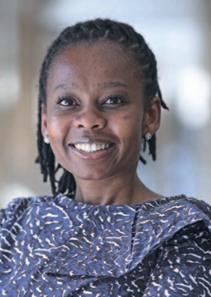
RMB applied a first-tomarket equity financing solution that generated enhanced shareholder returns
in a structure that resulted in significant saving on the cost of capital for shareholders, creating significant value for the client.
The learnings from closing the deal will help to streamline the rollout of the remainder of their 745GW for others.
“RMB, a long-standing partner of the Seriti Group, was an integral part of the formation of Seriti Green, of which we are also a minority shareholder,” says Sindisiwe Mosoeu, infrastructure finance transactor at RMB. x
May 23 - May 29,2024 . financialmail.co.za 11
Sindisiwe Mosoeu
Daniel Zinman
Special Report ?????
provide 128MW of contracted capacity that can be called upon by Eskom to be dispatched at specified times.
The power sources can be optimised as required to meet that demand. This means their output can be controlled to meet fluctuating electricity needs.
“These power plants represent significant dispatchable renewable energy plants, even by global standards,” says Siyanda Mflathelwa, head of PPPs and concessions at RMB.
Government has recognised the potential of VPPs to assist in alleviating load-shedding. Eskom has also implemented a stand-alone Bess programme that will allow the power utility to better meet peak demand periods by storing excess generation in offpeak periods. This will also have the added benefit of unlocking additional grid capacity in certain regions where renewable energy plants have
Funding central to expansion Infrastructure
Inventive models are required to close the gap
● To solve the energy crisis and meet future demand for energy, South Africa urgently needs to build new transmission lines.
A recentstudy by Meridian Economics and Krutham (previously known as Intellidex) on appropriate Independent Power Transmission (IPT) models to be implemented alongside Eskom’s grid build programme recommended two complementary models for private sector participation in the grid.
For large backbone infrastructureincluding interzonal power transfer lines, the study recommended a standard IPT build, own, operate and transfer (boot) modelwhere the
already been installed, such as the Northern Cape, allowing for greater renewable energy development.
Mflathelwa says VPPs offer a number of advantages which are expected to support their growing popularity.
“By combining multiple sources, VPPs can help balance fluctuations in renewable energy generation. They can also optimise energy use by drawing from the most cost-effective source at any given time. By integrating more renewables, VPPs can help reduce reliance on fossil fuels and lower greenhouse gas emissions, allow homes and businesses to participate in the energy market and potentially earn money from their own power generation or flexible energy use.”
VPPs gather data from the integrated technologies in each instance including the power generation from solar panels, wind turbines and energy storage levels in batteries as
well as real-time grid conditions and weather forecasts. Using this data, AI can predict energy generation from renewables and electricity demand with better accuracy, allowing for better planning and resource allocation.
By accurately predicting and responding to changes in

private sector finances and builds the grid for a statebacked capacity off-taker.
For grids connecting and conveying independent power producer (IPP) power into the main transmission backbone, it recommends an IPP-backed IPT boot model.
The study found that the current Eskom transmission model has not been updated to reflect the fact that the main transmission constraints are encountered when renewable energy flows from the Cape provinces inland, rather than from Mpumalanga where the coal stations are located. The challenge is that the Cape provinces have close to zero grid capacity left.
Both the tariff level and structure need an overhaul to reflect the cost of the grid build
and the changing nature of the grid constraints as renewable generation capacity is connected. The portion of electricity tariffs currently allocated to transmission is too small to justify the private investment required to supplement Eskom’s grid expansion.
The report calls the current transmission tariff structure “dysfunctional”, pointing out that Eskom’s regulated transmission tariffs result in negative returns, which undermines the financing of further capacity expansion. The transmission tariff needs to be redesigned to be cost reflective for any of the private transmission models to work.
As Eskom is not creditworthy in its current state and does not have adequate execution capacity given the size of
weather, demand and generation, AI can contribute to a more stable and reliable dispatch profile. “As AI capability develops further, it will have the capability to improve vastly the management of the complex mix of electricity sources within VPPs. Which is why we expect AI to play an even greater role in optimising the performance of these plants and contributing to a more sustainable and reliable energy future,” says Mflathelwa Countries such asGermany, the Netherlands and Australia as well as California are considered leaders in VPP development. All have supportive policies, regulations and market structures that encourage the development of VPPs.
While VPPs aren’t widespread in South Africa, initial projects and industry interest suggest they have the potential to play a significant role in the country’s future energy landscape. x
the challenge, innovative ways of containing costs and allocating risk will be required to limit the reliance on sovereign supportwhile a range of risks will need to be mitigated to give comfort to lenders, says the report. Among the recommendations made is an escrow arrangement, similar to the water trading entity model, to reduce the reliance on a sovereign guarantee.
South Africa needs more than 7,920km of 400KV lines to be built. A significant portion of this could be done by the IPPbacked model if the revenue model and tariffs are set correctly, says the report, adding that these new private sectorbased transmission models should be designed to achieve positive public interest outcomes. x
12 financialmail.co.za . May 23 - May 29,2024
Siyanda Mflathelwa
Creating Africa’scold chain
African Infrastructure Investment Managers is building Pan-African cold chain platform
● Sub-Saharan Africa’s cold chain logistical infrastructure sector is underdeveloped, and in some places non-existent.
However, demand for temperature-controlled logistics in Africa is expected to increase due to growing populations, higher rates of urbanisation and increased supply chain volatility due to climate change.
Cold chain logistical infrastructure will be critical if the region is to improve food security as well as meet the standards required to participate in global trade, while creating higher value jobs through more formal food retail and wholesale models.
African Infrastructure Investment Managers (AIIM), a division of Old Mutual Alternative Investments, has recognised the opportunity offered by an efficient cold chain and has established a pathway for scaling sustainable cold chain infrastructure across the region. AIIM has a 72% stake in temperature-controlled logistics platformCommercial Cold Holdings, which owns about 160,000 pallet positions across 10 facilities in SA and Namibia.
Dami Agbaje, investment director at AIIM, says Africa’ s nascent cold chain infrastructure must be developed substantially and sustainably to address food security and generate vital export revenues, both critical to economic growth.
Renewable energy, he adds, will be a key component to powering increased refrigeration capacity to lower the cold chain carbon footprint and satisfy the environmental, social, and governance (ESG) de-
mands of domestic and global commercial customers.
Agbaje says AIIM’s SA investments will be focused on decarbonisation and the removal of bottlenecks. “Our objective here is two-fold: ensuring food security by supporting low-carbon storage and distribution of staples like chicken, and helping local farmers participate in global trade in a manner that’s sustainable.”
AIIM has developed expertise in this area which will be leveraged in other countries to build up sustainable refrigerated warehousing and transportation, reliant on renewable power sources, he says.
“Agriculture plays a vital role on the continent, providing employment for about twothirds of Africa’s working population. On average, it contributes 30%-60% of each country’s GDP and about 30% of the value of exports. In terms of the proportion of the working population, agriculture employed approximately 43% of Africa’ s workforce in 2021.”
This reliance on agriculture underscores its significance in Africa’s economy and livelihoods, Agbaje says.
“Energy access is also a globally unparalleled issue across the continent,” he says, pointing out that 600-million people in Africa are without electricity, two-thirds of the figure for the world as a whole.
“This inevitably impacts access to large-scale cold storage. In Kenya and Nigeria, for example, where there is extensive investment in primary farming of key agricultural products, 50% of that produce goes to waste because of a lack of cold chain infrastructure.
“This offers immense potential to expand investment in what is a vital sector, removing bottlenecks to keep the chain
unbroken. It thus ensures the security of the domestic food supply and grants local producers access to international markets, as a driver of inclusive economic growth.”
There is a parallel challenge in place: what Africa needs to scale its agriculture, to grow farms and larger food businesses, is both scalable and sustainable cold chain infrastructure.
“Cold chain infrastructure is not only unevenly developed across the continent, but also tends to have a high carbon footprint, relying predominantly on diesel or grid energy where it is available. Unlike the rest of the continent, SA, with

Africa’s most advanced cold chain infrastructure, is also a high carbon emitter per capita, with grid energy largely coalgenerated, though it is committed to lowering emissions.
“Decarbonising the cold chain logistics sector where the carbon footprint is particularly high is pivotal, with sustainable storage solutions, powered by renewable energy, central to achieving the goal,” he says. The greening of cold chain infrastructure will allow farmers to supply fresh and processed food with a low carbon footprint to local and export markets, the latter of which is increasingly demanding trans-
parency along the food supply chain and production that complies with ESG standards.
“In meeting overseas demand, farmers and other supply chain businesses can have a significant economic impact, collectively boosting foreign exchange earnings of financially strained African countries,” says Agbaje.
In South Africa, AIIM is lowering the carbon footprint and at the same time expanding its storage volume by maximising the installation of solar panels and energy-efficient processes at the site of farms and other food businesses. “We invest in our own solar-generation capacity and battery capacity to store more solar,” says Agbaje. “And we also seek out independent power producers generating renewables, allowing us to buy additional capacity to supplement that which we create ourselves.”
AIIM’s diversified customer base includes food importers, food producers such as poultry, fruit and vegetable farms and fishing companies, as well as retailers and quick-service restaurants.
“We’re now an important part of the frozen and chilled foods supply chain in the country. However, our ambition is to extend AIIM’s expertise and technical abilities to other regions. We already have pipelines in Mozambique, Namibia, East and West Africa,” Agbaje says.
The benefits of AIIM’s model for sustainable cold chain infrastructure for investors is that it buys operational businesses, with existing skill sets and income streams, then builds or expands storage facilities and installs low-carbon power generation.
The approach has enabled the business to de-risk cold chain investment by reducing
May 23 - May 29,2024 . financialmail.co.za 13
Dami Agbaje
Special Report ?????
greenfield risk and growing an existing commercial customer base with the potential to expand into new markets.
“We are mitigating investor concerns over whether latent demand will be realised,” says Agbaje.
There are other challenges that concern investors across Africa, such as limited power transmission, logistics and enforcement of food standards,
SA’s connectivity challenge Infrastructure
Digital transformation and connectivity is an important component of development
● The rapid expansion of fibre-optic infrastructure is transforming South Africa’ s telecommunications’ sector.
The local wholesale fixed access market is projected to grow at an annual rate of 6.1% to reach R52bn in 2027, with growth driven primarily by the fibre industry, according to the SA Wholesale Telecoms Report. It is expected that the wholesale fixed access market will ultimately overtake mobile facilities in revenue.
In the past decade, fibre network operators have transformed the urban broadband access market. Fibre-optic networks provide greater bandwidth and speed, which enhances the user’s experience when accessing the internet and online service offerings. For service providers, revenue growth is driven by the increasing demand for uptake of packages.
Because of firstmover advantages, there is currently a land grab among passive network owners to install last-mile fibre with a focus on fibre to the home (FTTH). Last mile in a network is defined
which is why some big food operations are understandably nervous about outsourcing.
Agbaje is confident that AIIM’s good track record of delivery in South Africa suggests that these challenges can be overcome, allowing those players to scale their businesses by creating the infrastructure that helps them produce more and sell more.
“Our core expertise is max-
imising self-generation and minimising diesel consumption. This is a paramount consideration for customers because they don’t want to incur the increasing cost of electricity and also deal with its intermittency, which they would have to do if they managed their own cold chain,” he says.
Resolving the power-generation question in new territories and setting out pathways
that will reduce dependence on fossil fuels is key. An extensive industry network allows the investment manager to build food producing businesses that meet global standards.
“Our work in SA demonstrates that it is possible to scale sustainable cold chain infrastructure for the benefit of most food supply chain operations, from producers to major retail chains,” says Agbaje. x
as the final length of cabling, or antenna transmission, from the nearest distribution point to a home or workplace.
Digital transformation in South Africa is happening in tandem with growing digital connectivity. An important element of infrastructure development, it has proven to be a fundamental resource for socioeconomic development and growth.
Andrew Dabalen, World Bank chief economist for Africa, was quoted as saying that the minimal usage of mobile internet is a lost opportunity for inclusive growth in Africa. “Closing the uptake gap would increase the continent’ s potential to create jobs for its growing population and boost economic recovery in a highly digitalised world.”
In South Africa, data usage is expected to increase with video downloads and the introduction of Internet Protocol Television. The work from home trend has also increased demand for faster internet con-
nectivity in households.
Chito Siame, investment principal at Mergence Investment Managers, says digital connectivity is being regarded as the fourth utility with few households able to afford to function without stable and effective internet.

Mergence, an infrastructure and development asset manager, invested in Linteg Fibre, a privately owned FTTH infrastructure business through the Mergence’s Infrastructure & Development Equity Fund I.
Linteg specialises in costeffective, high-speed open and, sometimes closed, access lastmile fibre-optic networks in commercially feasible suburbs in South Africa. The company has more than 7,500 endpoints either installed or contracted to be installed in the next few months. The target for the fourth quarter of 2024 is to have about 12,000 points installed. Linteg is not the only fibre investee company in the Mergence fund portfolio. In total, Mergence has exposure to more than 35,000 endpoints through other investments.

“Mergence clients are primarily large pension funds who benefit from infrastructure investments. From a strategic asset allocation perspective, infrastructure investments offer investors portfolio diversification and returns that are uncorrelated with other asset classes,” Siame says.
Mergence is not new to infrastructure investing and was a pioneer in impact and infrastructure investing. It launched its first socially responsible fund range in 2010, which has grown to a suite of five innovative funds in the private markets space.
It has invested across both debt and equity, and sectors spanning renewable energy, information and communications technology, affordable housing, water, financial inclusion, transport and health.
“Infrastructure is an asset class that provides a hedge against inflation and delivers long-term, steady and risk-adjusted returns,” says Siame. x
14 14 financialmail.co.za . May 23 - May 29,2024
Writer: Lynette Dicey Sales: Cris Stock Cover: Colleen Wilson Cover images: 123RF
Chito Siame

GREEN MEANS GROW
Seriti Resources, a key player in South Africa’s private power sector, delivers 155MW of sustainable power through a Mpumalanga wind farm project. RMB secured R4bn in funding as co-mandated Lead Arranger.

;8@;F;@8
BDA8D6EE 2@5
BDA<64FE 56>;H6D65
?682 BDA<64FE D 3;>>;A@ E64FADE
:G?2@ E6FF>6?6@FE
I2F6D 2@5 E2@;F2F;A@ EFG56@F 244A??A52F;A@
56H6>AB?6@F ;?B24F
:G?2@ E6FF>6?6@F G@;FE ?682>;FD6E I2F6D 2@5 E2@;F2F;A@ 365E EFG56@F 244A??A52F;A@
255D6EE
>6H6D DA25 :625I2K :;>> ?;5D2@5 EAGF: 27D;42
B:A@6 6?2;> I63?2EF6D 53E2 AD8



8DAIF: ;@7D2EFDG4FGD6 7G@5
























































